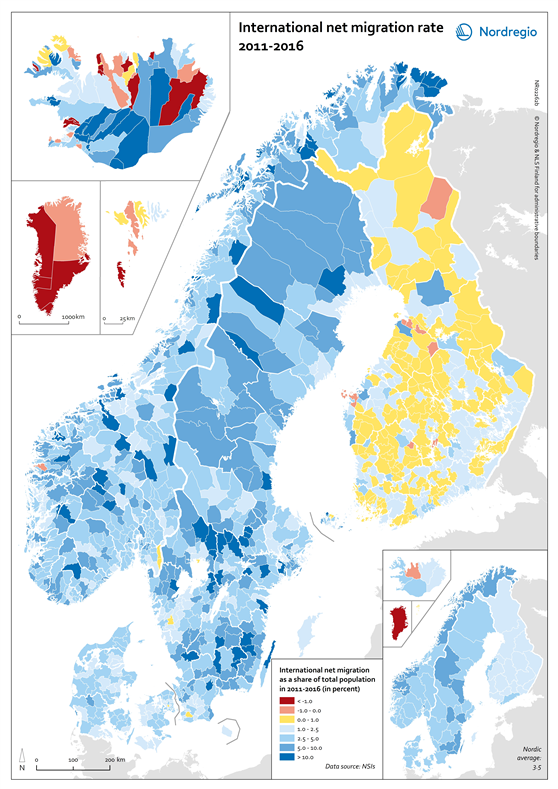This map shows the international migration rate in the Nordic municipalities between 2011 and 2016. The smaller map shows the international migration rate in the Nordic regions between 2011 and 2016.

Migration has become the major source of population increase in the Nordic Region. Since 2000, the population of the Nordic Region increased by 2.7 million. Thirty percent of this increase was from natural increase (more births than deaths) and 70% was from net migration (more immigrants than emigrants). This means that most of the population growth is from the immigration of people from another Nordic country or from outside the Nordic countries.
The blue tones indicate positive international net migration as a share of the total population in 2011-2016. The red tones indicate negative international net migration as a share of the total population in 2011-2016. The yellow colour indicates stable international net migration as a share of the total population in 2011-2016.
There were significant differences at the regional and municipal levels within the Nordic Region. At the regional level, all regions in Norway, Sweden and Denmark saw increases from international migration of more than 2.5%. In Finland, only the capital region had such gains from international migration while all other regions had smaller but positive increases. In Iceland, there were a mix of regions seeing gains and declines from international migration. At the municipal level, in Norway and Sweden there were many regions throughout the two countries that saw gains from international migration of more than ten percent. Most of these were outside the capital regions and with smaller population bases. Overall, Finland had smaller gains from international migration and had no municipalities with gains of more than ten percent and a few with losses. Iceland sees a more varied pattern with a few municipalities with small populations having large increases from international migration and a few having net losses including some close to the capital.


